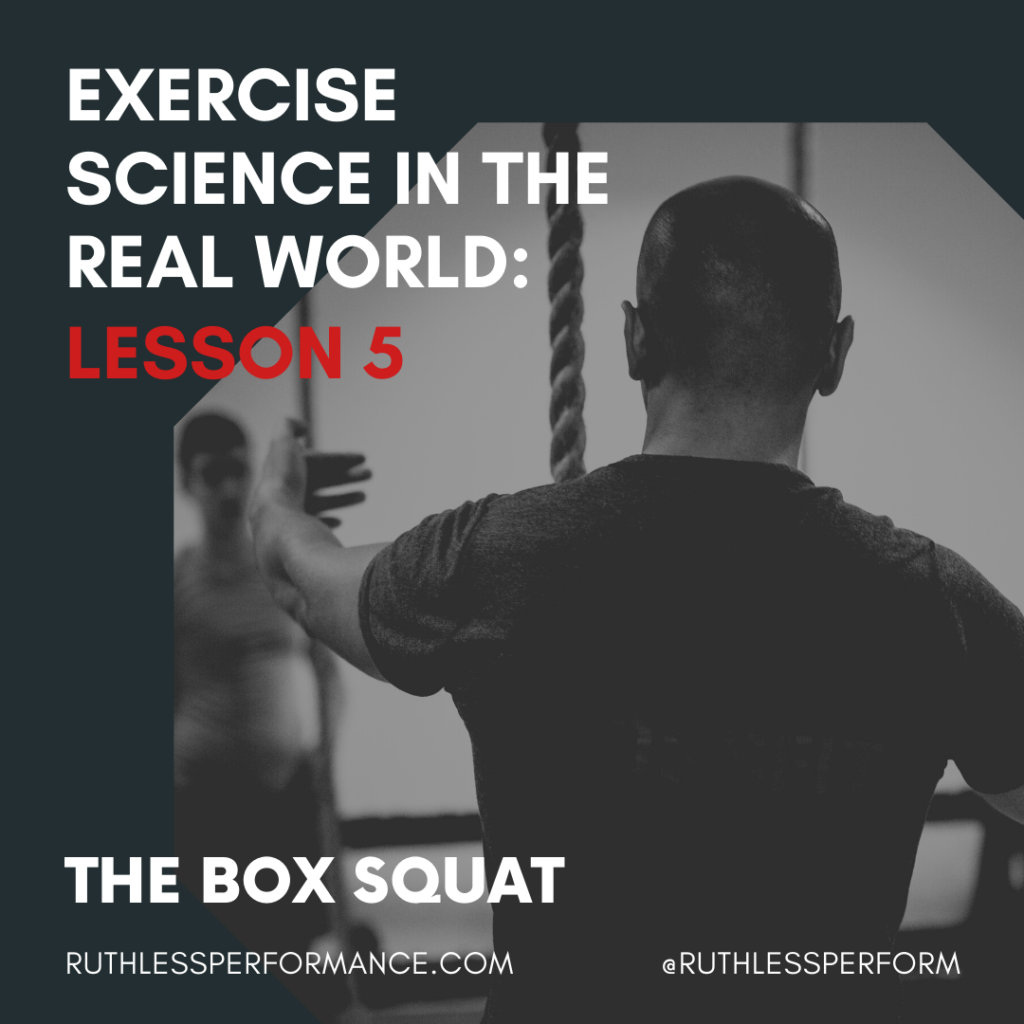**Editor’s Note: This series comes from current Ruthless Performance Intern and Assistant Strength & Conditioning Coach, Keith Lowery. Keith is a senior exercise science student at Bloomsburg University, which has an affiliate agreement with Ruthless. As senior exercise science students complete their 4-year program, they are required to complete an arduous semester-long internship. These lessons will be presented weekly as interns gain real-world experience in the realm of strength and conditioning during crucial on-the-job education. View installment 4 here.**
The Box Squat
The box squat is a variation of a full squat where one must sit down fully on a box then squat back up rather than squat to depth in a free squat. Box squats can be used for all variations of free squats like the front squat, back squat, and goblet squat as a way to build strength and teach new lifters how to hit depth and use the right muscle groups. To correctly box squat, one must sit back on the box completely releasing the hip and leg muscles used in controlling the eccentric portion of the squat while simultaneously keeping proper bracing in the mid section to not allow the bar weight to fold the lifter in half. Sitting back on the box rather than squatting to the box allows these muscles to relax then re-engage as the lifter proceeds in finishing the exercise. This in turn, teaches the lifter to use the right muscle groups more efficiently.
At Ruthless Performance all clients start off with a dumbbell/ kettlebell goblet box squat to teach them how to squat to depth properly without compromising form. In a free squat for example, when attempting for the first time, it can be challenging to hit depth comfortably. This is due to being a new position that the body is in and not having the flexibility to hold it confidently. Then, during the concentric phase of the exercise athletes tend to cave their knees inward not knowing how to properly use their posterior chain i.e. hamstring and gluteal musculature. Having them box squat allows them to complete a range of motion they are used to doing, which is sitting down and standing back up. Also this gives you the opportunity to show them how to position their feet and where their knees should travel in relation to their feet as they ascend upwards during the concentric phase of the exercise.
The client must be able to release their hip muscles on the box then re-engage them as they come off the box to do the repetition properly. From my observations, an athlete cannot progress to a free squat until they learn how to do that. They must learn to get out of the mental state of squats being driven to the top because of the quadriceps and instead think about finishing the repetitions with their hamstrings and gluteal muscles. The ideal way of teaching the athletes how to engage these muscles in this exercise is through demonstrations and most importantly through coaching them through their repetitions. Since many do not know how to engage the posterior chain properly, verbal cues must be given as they are performing the exercise. This is done by giving the client a relatively light/ submaximal weight that allows them to be able to focus on the exercise and listen to your coaching at the same time. As a person’s strength and technique progresses, more weight and volume can be added to build upon that base.

